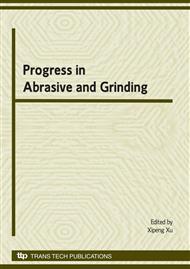p.23
p.33
p.45
p.61
p.69
p.77
p.85
p.97
p.103
Surface Characteristics of Efficient-Ground Alumina and Zirconia Ceramics for Dental Applications
Abstract:
Progress of new dental materials such as biocompatible metal, ceramics is being accelerated because of aging society and sophistication of medical treatment. In addition, the demand for dental implant treatment is increasing. Currently, dental implant crowns (superstructures) are formed by cutting semi-sintered ceramics and then sintering the ceramics at a high temperature. So, there is some concern that to maintain the form accuracy of the workpiece is difficult. Meanwhile, it is usually difficult to machine sintered ceramics with high precision and high efficiency. In this paper, we tried to apply grinding with metal bonded superabrasive wheels, and investigated the grinding and surface characteristics of an alumina and zirconia ceramics for dental implant superstructure due to lack of such data. As a result of experiments, sintered dental ceramics can be ground with high precision and Fe, it has harmful effect to human body, was not detected in sintered dental ceramics.
Info:
Periodical:
Pages:
69-75
Citation:
Online since:
January 2009
Authors:
Price:
Сopyright:
© 2009 Trans Tech Publications Ltd. All Rights Reserved
Share:
Citation:


